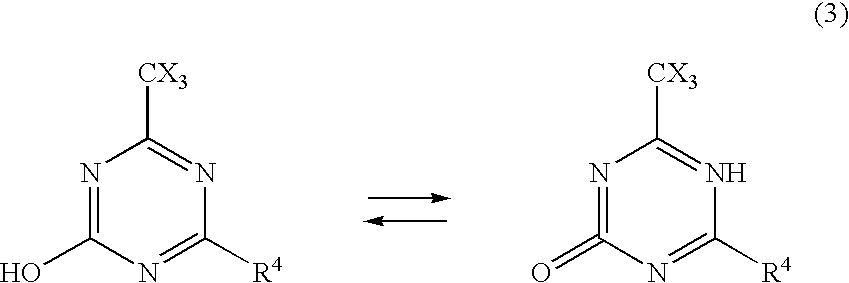Photopolymerization initiator
a photopolymerization and initiator technology, applied in the direction of impression caps, dental prostheses, prostheses, etc., can solve the problems of high polymerization activity, difficult operation, and increased viscosity of composite resin (paste), and achieve high stability against environmental light, affecting the color tone of photopolymerizable composition, and easy polymerization
- Summary
- Abstract
- Description
- Claims
- Application Information
AI Technical Summary
Benefits of technology
Problems solved by technology
Method used
Image
Examples
examples
[0095]The invention will be described below more concretely by way of Working Examples to which only, however, the invention is in no way limited. Abbreviations of the compounds used in the following
example 1
[0175]As the polymerizable monomers, there were used D-2.6E (70 parts by mass), 3G (25 parts by mass) and UDMA (5 parts by mass), and to which were added the polymerization initiators, i.e., CQ (0.3 parts by mass), DMPT (0.25 parts by mass), DMEM (0.25 parts by mass) and TCT (0.4 parts by mass). The mixtures was dissolved in a dark place to obtain a homogeneous solution thereof. By using three kinds of dental irradiators (LM, A95, TP), the solution was evaluated for its curability and Vicker's hardness. The results were as shown in Table 1.
examples 2 and 3
, Comparative Examples 3 to 6
[0180]The solutions were prepared in the same manner as in Example 1 but changing the composition of the polymerization initiator as shown in Table 2, and were evaluated. The curability was evaluated by using a halogen lamp (TP). The results were as shown in Table 2.
[0181]
TABLE 2Photopolymerizationinitiator / parts by massTP curabilityHardnessCQDMPTDMEMTCTPh2IPF65 sec.10 sec.15 sec.LMA95TPEx. 2 0.150.250.250.4—◯111215Ex. 30.30.250.250.4—◯121116Comp.0.30.250.25——XΔΔ 4 3 9Ex. 3Comp.0.3——0.4—XXΔcouldcouldcouldEx. 4not benot benot bemeasuredmeasuredmeasuredComp.—0.250.250.4—XXXcouldcouldcouldEx. 5not benot benot bemeasuredmeasuredmeasuredComp.0.30.5 ——0.4Δ◯ 9 813Ex. 6
[0182]Comparative Example 3 was not blended with the triazine compound which is one of the essential components of the photopolymerization initiator of the present invention. In this case, the curing rate was very slower than that of the Examples that were blended with the triazine compound. Furth...
PUM
| Property | Measurement | Unit |
|---|---|---|
| Percent by mass | aaaaa | aaaaa |
| Percent by mass | aaaaa | aaaaa |
| Percent by mass | aaaaa | aaaaa |
Abstract
Description
Claims
Application Information
 Login to View More
Login to View More - R&D
- Intellectual Property
- Life Sciences
- Materials
- Tech Scout
- Unparalleled Data Quality
- Higher Quality Content
- 60% Fewer Hallucinations
Browse by: Latest US Patents, China's latest patents, Technical Efficacy Thesaurus, Application Domain, Technology Topic, Popular Technical Reports.
© 2025 PatSnap. All rights reserved.Legal|Privacy policy|Modern Slavery Act Transparency Statement|Sitemap|About US| Contact US: help@patsnap.com



